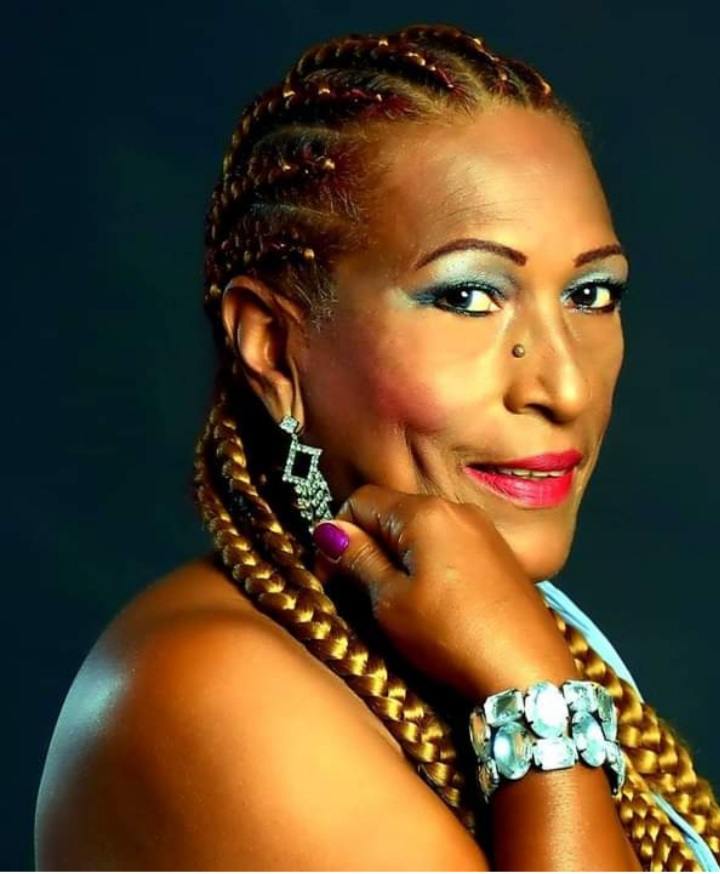By: Professor MSc. Carlos Colmenárez (Venezuela)
Greetings, dear and consistent readers of Salsa Escrita, from this server, your longtime friend, Professor MSc. Carlos Colmenárez. It is a great satisfaction for me to be able to reach all of you through International Salsa Magazine, to whom I am very grateful for your trust and thus be able to make known the Venezuelan salsa talent and also from other countries, where Afro-Latin music continues and will continue to be projected and promoted with much professionalism in its prestigious pages.

In this issue of Salsa Escrita, we bring you four exponents of Afro-Caribbean music, born in Venezuela, who exalt the genre with great class and success, earning the respect and admiration of all its followers. So, ladies and gentlemen, we present to you in special reviews Hildemaro “El Sonero del Amor”, Mariana “La Sonera de Venezuela”, Édgar “Dolor” Quijada and Héctor “Malecón”. We hope you enjoy the written interaction between you and International Salsa Magazine.
Hildemaro “The Sonero of Love”

On this occasion we will mention a vocalist who has stood out for his excellent interpretive quality and professionalism during his long and successful career, both in Venezuela and abroad; we refer to José Hildemaro Hugas Amarista, better known as Hildemaro “El Sonero del Amor”.
The Venezuelan singer-songwriter, born in Caripito, Monagas state, on November 10, 1957, told us that his musical interests came from a very young age, participating in festivals in his home state and musical groups in that locality, until he was presented with the opportunity to go to Caracas in 1976 and join the orchestra “Los Satélites”; Then in 1979 he joined the “Orquesta Ideal”; later he worked with the “Súper Combo los Tropicales”, “Noche Caliente” and the “Orquesta de Porfi Jiménez”; and finally in 1985 he joined Renato Capriles’ orchestra “Los Melódicos”, which gave him the greatest and best experience.
The following year,” Hildemaro continued, “he decided to definitely make his way as a salsa performer, recording his first LP under the TH label, thanks to his music producer, José “El Flaco” Bermúdez, and since then he has remained in his project of a fruitful singing career.
In 1988 he recorded his album “Amanecí contigo”, propelling it into the international market, hitting his songs with great acceptance, both in Venezuela and abroad, showing his face in the country as a salsa performer before the world.
Peru was his first point of attack, as well as the United States, and with that goal he was always renewing his repertoire.
In 1989 he recorded the production “Sin Tabú”, winning a gold record and triumphing on stages in Panama, Mexico, Colombia and New York; In 1990 he recorded the acetate “Romántico y sensual”, with which he demonstrated once again that he has one of the best voices in Latin American and Caribbean salsa, qualities that were also captured in his 4th album entitled “Lo mejor de mi” in 1991, later in 1993 he released his 5th LP “Al natural”, two years later the long play “Lo que siento” in 1995 and in 1996 the album “La mejor salsa con Hildemaro”.
In 2002 and 2003, he burst again into the radio stations nationally and internationally with 2 singles: “Corazón loco” and “El celular”, with which he once again demonstrated his great vocal capacity.
Among his best known hits are: The first time, Hola, Amanecí contigo, Desde el fondo de mi corazón, Negra, Agua caliente, Sin tabú, Al natural, Apago la luz, Como nadie, Cabalgaremos, Lucero and many more.
At the present time it comes from succeeding in Peru, Colombia, Spain, Italy and Sweden. In Venezuela she works with her own orchestra “Caripito all Stars”.
Finally she told us “El Sonero del Amor” that she registered her foundation “Hildemaro Hugas”, a non-profit organization to help children, elderly and people who deserve it.
By 2020, with God’s favor, he returns to the United States, where he is acclaimed by romantic dancers, just like in Peru, his second homeland. Hildemaro’s social networks are: Instagram @sonerodelamor, Facebook: José Hildemaro Hugas, phone: +58 412 2934606 and +58 416 0580079 for bookings.
Edgar “Dolor” Quijada

Sonero from A to Z, it’s that simple. Not everyone can be graded that way and not everyone has the privilege of being so. It is a title that must be achieved “on the go”, working very hard day and night. The “Masters” in sounding were Benny Moré and Ismael Rivera, to name the most significant.
In this regard, we must mention other vocalists of the stature of Cheo Feliciano, Gilberto Santa Rosa, Pete “El Conde” Rodriguez, Chamaco Ramirez and others of renown who took the baton; in the courtyard, Oscar D’Leon, Orlando Watussi, Mariana Guevara, Marcial Isturiz, Charlie Guzman, Ronald Gomez, among others, each with his own style and particularity. The one we will talk about today, has already occupied that place for years, I am referring to Edgar José Quijada, from January 23rd, Caracas. The man of “Pain”, an appellation given to him by his brothers.
In all his life he has not stopped singing and that comes from his mother. The trajectory of Édgar “Dolor” Quijada, born on March 21, 1954, dates from more than 40 years ago, since he began with the Yacambú Orchestra and later he was called to accompany national and international singers and to integrate orchestras such as: Década, Federico y su Combo, Los Incorregibles, Repicao, Soledad Bravo, Naty y su Orquesta, Guajeo, Cheo Feliciano, Celia Cruz, Johnny Pacheco, Pete “El Conde” Rodríguez, Adalberto Santiago, Ismael Miranda, Ismael Rivera, Larry Harlow, Héctor Lavoe and Justo Betancourt.
Since the founding of Cheo Navarro’s Orquesta Bailatino 23 years ago, he has been one of its performers along with Rónald Gómez and Francisco Rojas. His hits include: Mi vecina, Tengo la piel cansada de la tarde, A donde está Margot, Loco en la vía and many more. He is also the vocalist of El Guajeo de Alfredo Naranjo, Orquesta Tributo, Los 12 Apóstoles; as well as his solo performances in shows at the national and international level.
Finally, Edgar “Dolor” Quijada told us that he is currently based in Bogota, Colombia, with new musical projects. Social networks: Instagram @edgardolor; Facebook: Édgar Quijada, telephone for bookings: +57 301 6593904.
Hector “Malecon”

of Barquisimeto
In Barquisimeto, a city known as the “Musical Capital of Venezuela”, there are musicians and vocalists of extraordinary quality, and on this occasion we will mention the singer, sonero and composer, Héctor Luis Montes González, known artistically as “Héctor Malecón”, born on April 3, 1988 and since his childhood he has lived in the El Malecón neighborhood of our twilight city; His musical beginnings were inspired by the composition of songs and by the mythical-religious influence, they motivated him to write and to interpret his first single titled “A la Reina”, in honor to María Lionza.
In April 2012, he decided to gather a group of young musicians from his neighborhood and formed a salsa group, calling it “Orquesta Malecón”, thus beginning his successful career with musical director César Salas and arranger Rubén Levy.
Some songs from their first recording production and authorship are A la Reina, Acepto mi error, Flor de mayo, Qué es lo que te pasa, Mejor plato, Castillo de arena y el Despojo; which you can enjoy on Youtube.
Likewise, he has shared the stage with the Lebrón Brothers, the Dimensión Latina, Bailatino, Orquesta La Salsa Mayor, Grupo Mango, Porfi Baloa y sus Adolescentes, Mariana La Sonera, Édgar “Dolor” Quijada, Hildemaro, Rónald Gómez, among others.
In 2016, he obtains the 1st place in the contest “Dile no a la Payola” of the PDVSA La Estancia Salsa Festival in Caracas and is later applauded by the Caracas salsa sovereign in the Diego Ibarra Square and El Poliedro.
Currently, Héctor Luis, becomes known with his project “Héctor Malecón” and from his own inspiration is promoted with his song “Quieres volver”, through @hectormalecon.
Finally, he declares that he was temporarily based in the city of El Callao, Peru, demonstrating his talent and affinity as lead vocalist of the orchestra “Son D’ Kalibre”, performing group songs and great salsa hits, under the direction of Rubén Medina and integrated by Venezuelan and Peruvian musicians.
At present, already in Barquisimeto, Venezuela, he has planned to structure his new orchestra, with new themes of his own inspiration, to put all salsa lovers to dance. His social networks are: Instagram @hectormalecon; Facebook: Héctor Malecón, for bookings by phone +58 412 7720290.
Mariana “La Sonera de Venezuela”

One of the most emblematic characters of Venezuelan salsa is Janett Guevara García, known artistically as Mariana “La Sonera de Venezuela”; she was born in Caracas and currently lives in La Guaira. Since she was a child she showed her taste for music; activity that has been her eternal passion and has led her to make 12 record productions.
Mariana started with Naty Martínez’s Orchestra and has been supported by the Fania Stars, José Alberto “El Canario”, the Gran Combo of Puerto Rico and her great friend Oscar D’León, who has advised and helped her so that, throughout her career, the responsibility of being the sonera of Venezuela falls on her.
Mariana has had the opportunity to alternate with groups of the stature of the Orquesta de La Luz, Grupo Niche, Guayacán, El Canario, Gran Combo de Puerto Rico and la Sonora Ponceña. Among her songs are: Frases hechas and Eres más fuerte que yo.
It is worth mentioning that, among the numerous recognitions received, he was awarded directly from Miami and presented in Caracas by Richard Roman and Nohemy Chavez, the “Salsa Superior” prize, which among those who have it, are Luigi Texidor, Roberto Roena, La Dimensión Latina and Rubén Blades, among other salsa figures. The sonera is worthy of this plaque thanks to God and her public who have supported her during her 30 year artistic career.
The “Sonera” is part of the orchestra “Rumberos del Callejón”, “Los 12 Apóstoles” and also has its own group. Incidentally, she was honored in the city of Barquisimeto in 2018 with the unveiling of a mural in her honor on Oscar D’Leon Boulevard.
She will soon be making musical tours throughout the country and abroad. Among his latest works, he recorded the song “Mulata guerrera”, by Puerto Rican composer Eduardo Zayas, included in the production “Entre Titanes”, which featured the participation of figures such as Marcial Istúriz, Rodrigo Mendoza, Édgar “Dolor” Quijada, Efrén Avellaneda, Noel Machado, Choco Orta, Yomar Méndez “Caballo”, Leo Pacheco Jr.
For hiring Mariana “La Sonera de Venezuela”, you can do it by: +58 414 2921521 y +58 416 0580079. Her social networks are: Instagram @sonsonera1, Facebook: Mariana La Soner












